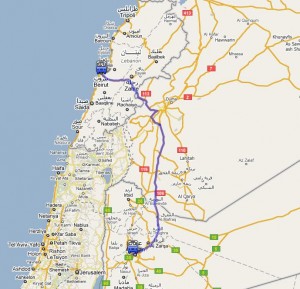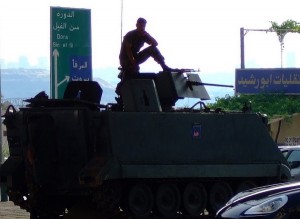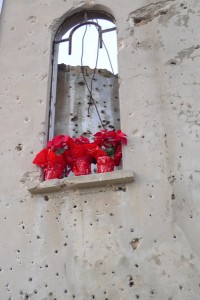We swing along the Damascus Road down through the Beqa’a Valley with Fairuz blasting out of the bus’ speakers: khidni wa zraani bi arrid Libnan (take me and plant me in the land of Lebanon). The speakers fail to render her many high notes which splurge out saturated. In fact the sound is not altogether dissimilar to the coach’s singsong horn, which blurts out frequently as we barrel downhill, overtaking, and crawl uphill, being overtaken.
The lady behind me taps me on the shoulder and hands me a gardenia blossom. Its rich heady scent fills the bus, mingling with the driver’s cigarette smoke and the mint leaves in my rolled labneh sandwich. After a very short night, not even the triple overtaking on blind bends or the subsequent near collisions and horn-leaning can keep me awake. I’m lulled off to an Arabic cover of Gloria Gaynor’s “I will survive”, until we are ushered off the bus for customs formalities.
The trip from Beirut to Amman via Syria involves getting out of the bus for passport stamping Read the rest of this entry »




